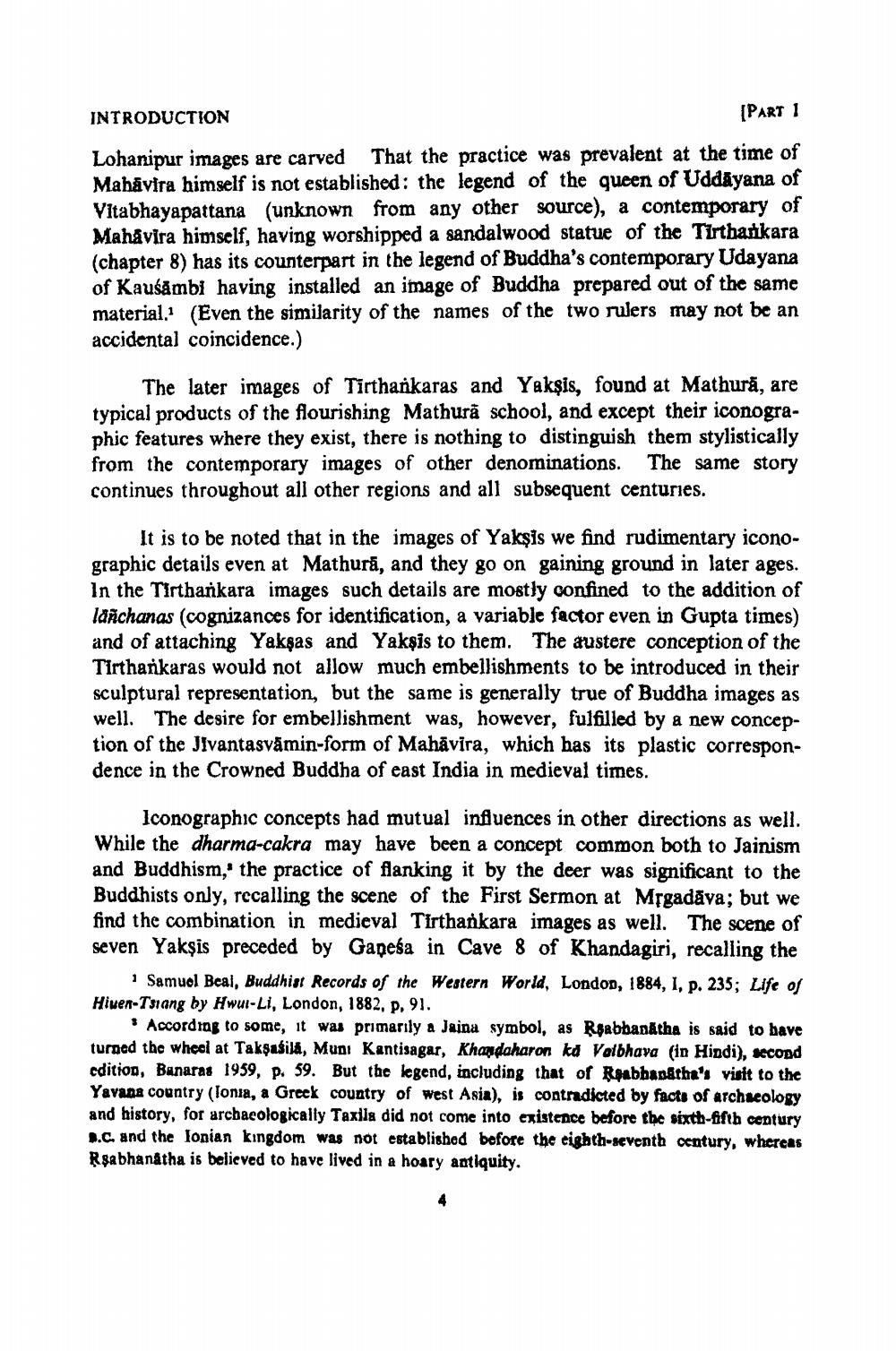________________
INTRODUCTION
(PART 1
Lohanipur images are carved That the practice was prevalent at the time of Mahavira himself is not established: the legend of the queen of Uddāyana of Vitabhayapattana (unknown from any other source), a contemporary of Mahavira himself, having worshipped a sandalwood statue of the Tirtharkara (chapter 8) has its counterpart in the legend of Buddha's contemporary Udayana of Kaušámbi having installed an image of Buddha prepared out of the same material. (Even the similarity of the names of the two rulers may not be an accidental coincidence.)
The later images of Tirthankaras and Yakşis, found at Mathurā, are typical products of the flourishing Mathură school, and except their iconographic features where they exist, there is nothing to distinguish them stylistically from the contemporary images of other denominations. The same story continues throughout all other regions and all subsequent centuries.
It is to be noted that in the images of Yaksis we find rudimentary iconographic details even at Mathură, and they go on gaining ground in later ages. In the Tirthankara images such details are mostly confined to the addition of lakchanas (cognizances for identification, a variable factor even in Gupta times) and of attaching Yakşas and Yaksis to them. The austere conception of the Tirtharkaras would not allow much embellishments to be introduced in their sculptural representation, but the same is generally true of Buddha images as well. The desire for embellishment was, however, fulfilled by a new conception of the Jlvantasvāmin-form of Mahāvira, which has its plastic correspondence in the Crowned Buddha of east India in medieval times.
Iconographic concepts had mutual influences in other directions as well. While the dharma-cakra may have been a concept common both to Jainism and Buddhism,' the practice of flanking it by the deer was significant to the Buddhists only, recalling the scene of the First Sermon at Mrgadāva; but we find the combination in medieval Tirthankara images as well. The scene of seven Yaksis preceded by Ganesa in Cave 8 of Khandagiri, recalling the
Samuel Beal, Buddhist Records of the Western World, London, 1884, I, p. 235; Life of Hiuen-Tsang by Hwul-Li, London, 1882, p. 91.
According to some, it was primarily a Jaina symbol, as Rsabbanátha is said to have turned the wheel at Takşašila, Muni Kantisagar, Khandaharon ka Valbhava (in Hindi), secopd cdition, Banaras 1959, p. 59. But the legend, including that of Rabbanatha's visit to the Yavana country (lonia, a Greek country of West Asia), is contradicted by facts of archaeology and history, for archaeologically Taxila did not come into existence before the sixth-fifth century A.C. and the Ionian kingdom was not established before the eighth-seventh century, whereas Rsabhanatha is believed to have lived in a hoary antiquity.




